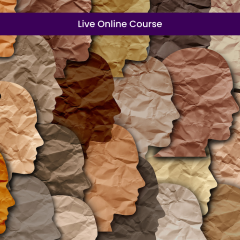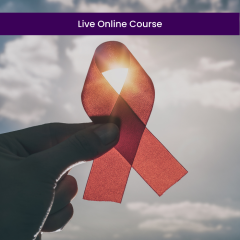Eating Disorders and Disordered Eating in the LGBT Community (1 CE)
Number of Credits: 1 CE credit
This course is for: Clinical Psychologists, Counselors, and LMFTs
Course By: Michael Parent, PhD
Content By: Parker, L. L., & Harringer, J. A., (2020). Eating disorders and disordered eating behaviors in the LGBT population: A review of the literature. Journal of Eating Disorder, 8, 51-71. doi: 10.1186/s40337-020-00327-y
Course Description: Lesbian, gay, bisexual, and transgender (LGBT) adolescents and adults have elevated rates of mental illness compared to heterosexual and cisgender people, due to stigma and prejudice. The minority stress model is a leading framework for understanding mental health disparities among LGBT groups and focuses on unique distal and proximal stressors experienced by LGBT people. A review was conducted of research on eating disorders within the LGBT population. Rates of eating disorders and disordered eating behaviors (i.e., individual behaviors such as purging or fasting without meeting criteria for an eating disorder) are elevated among LGBT people compared to heterosexual and cisgender people. The authors review specific disparities among adults and adolescent lesbians, gay men, bisexual men and women, and transgender and gender-nonconforming individuals. The authors also review specific proximal and distal stress risk factors for each group. The authors conclude that LGBT individuals tend to be at higher risk for disordered eating and eating disorders than their heterosexual and cisgender counterparts, and that proximal and distal stressors account for this disparity. Future research may address factors that are protective against eating disorders and disordered eating among LGBT people and may further explore disparities at the intersection of sexual and gender identity and race/ethnicity.
Learning Objectives:
- Assess disparities in eating disorder and disordered eating incidence among LGBT populations
- Identify the seven main groups of risk factors for eating disorders and disordered eating among LGBT populations
- Explain risk factors for eating disorders and disordered eating that are unique to specific LGBT groups
Course Outline:
- Read and understand Eating disorders and disordered eating behaviors in the LGBT population: A review of the literature.
- Review the Course Description and Learning Objectives.
- Review the risk factors for eating disorders and disordered eating identified in the study.
- Complete the post-test questions. Recall that answers should be based on the referenced article.
- Return to the referenced article for any missed questions and/or to understand eating disorders and disordered eating in the LGBT population.
Approvals:
| Board Approvals | American Psychological Association (APA), NBCC, Florida Board - Social Work, MFT, Counseling, and Psychology, NYSED - Social Work, MFT and Counseling Only, American Academy of Health Care Providers in the Addictive Disorders |
|---|---|
| CE Format | Online, Text-Based |







